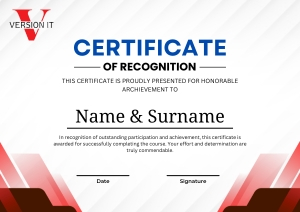Snowflake provides a single, global platform for your entire database ecosystem, allowing for easy collaboration between multiple business units. This platform provides the ideal balance of performance, flexibility, and near-infinite scalability for quickly uploading, combining, analysing, and authentically sharing data everywhere, at any time. It is a fully managed service that is simple to use while handling a large number of concurrent workloads. The best thing is that it can run on several cloud platforms, including Amazon S3, Microsoft Azure, and Google Cloud Platform.
Version IT is the market leader in Snowflake training Institutes in Hyderabad. We cover in our syllabus how to use the Snowflake Cloud Data Platform to explore, load, visualise, and extract insights. With so many SAAS-based data warehouse tools on the market today, Snowflake stands out for its unique design and approach.Snowflake is working on a smoother and more user-friendly application. Snowflake, unlike existing data warehousing solutions, is designed on a new SQL engine that is perfectly suited for cloud.
One of Snowflake’s unique features is its table structures, which use Micro–Partitioning and Data–Clustering. Snowflake allows users to “time travel,” or track data changes across time and view changes made up to 90 days earlier. Snowflake also has the following features:
- Cloning — the clone feature instantly copies any snowflake object.
- Undrop – Any object that has been dropped (databases, tables, schemas, etc.) can be undropped.
- Fail safe – In case of a disaster, such as hardware or disc failure. Snowflake engineers can restore data for up to 7 days after a failure.
Snowflake architecture supports in dealing with data and analytics, as well as data warehousing capabilities.





